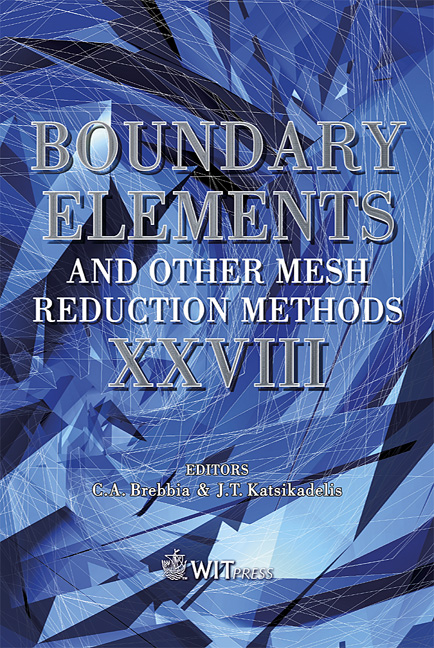Boundary Element Method For The Analysis Of Flow And Concentration In A Water Reservoir
Price
Free (open access)
Transaction
Volume
42
Pages
10
Published
2006
Size
517 kb
Paper DOI
10.2495/BEM060241
Copyright
WIT Press
Author(s)
M. Kanoh, N. Nakamura, T. Kuroki & K. Sakamoto
Abstract
In an earlier study, a boundary element method (BEM) and a weighted finite difference method (WFDM) were combined to analyse the flow in a water reservoir. In this paper, the BEM is developed to obtain numerically stable and convergent results for the water flow and concentration distribution in the water reservoir. In order to apply the BEM to the problem, three techniques were used. (1) The first is the penalty method, in which the pressure terms are eliminated in the Navier-Storks equations for the BEM. (2) The second involves taking the uniform velocity into the basic solution in both the flow and concentration distribution analyses of our BEM. (3) The third is to identify the kinetic and dynamic conditions for pressure against the vertical wall or the bottom and on the free surface of the reservoir because it is necessary to ascertain the pressure conditions in case that the penalty method is not used. Referring to the velocity vectors of the water flow that are calculated by the WFDM and observed in the model simulation of a water reservoir constructed in our laboratory, the effect and accuracy of the alternative BEM are estimated. Keywords: flow and concentration in a water reservoir, weighted finite difference method, observed velocity in a model simulation of a water reservoir, kinetic and dynamic conditions for pressure. 1 Introduction A poor-oxygen layer, which is short of or lacking in dissolved oxygen (DO), often appears in the lower regions of water reservoirs in summer. The pooroxygen condition results in the solving of heavy metals and phosphorous from
Keywords
flow and concentration in a water reservoir, weighted finite difference method, observed velocity in a model simulation of a water reservoir, kinetic and dynamic conditions for pressure.





